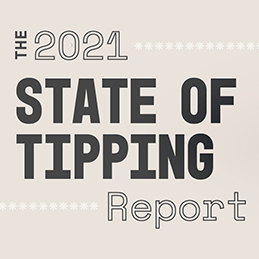
2021 Report: The State of Tipping
As we head into the home stretch of 2021, we set out to understand the state of the consumer mindset as people continue to traverse the ever-evolving nature of the pandemic by dining out and/or ordering food online. One particular area of interest is how the pandemic has shaped the way customers tip restaurant, bar, and other food service industry employees.
As a result, we surveyed 1,072 Americans and asked them about their tipping habits when dining out, ordering takeout, and ordering via third-party delivery services like DoorDash, GrubHub, and UberEats.
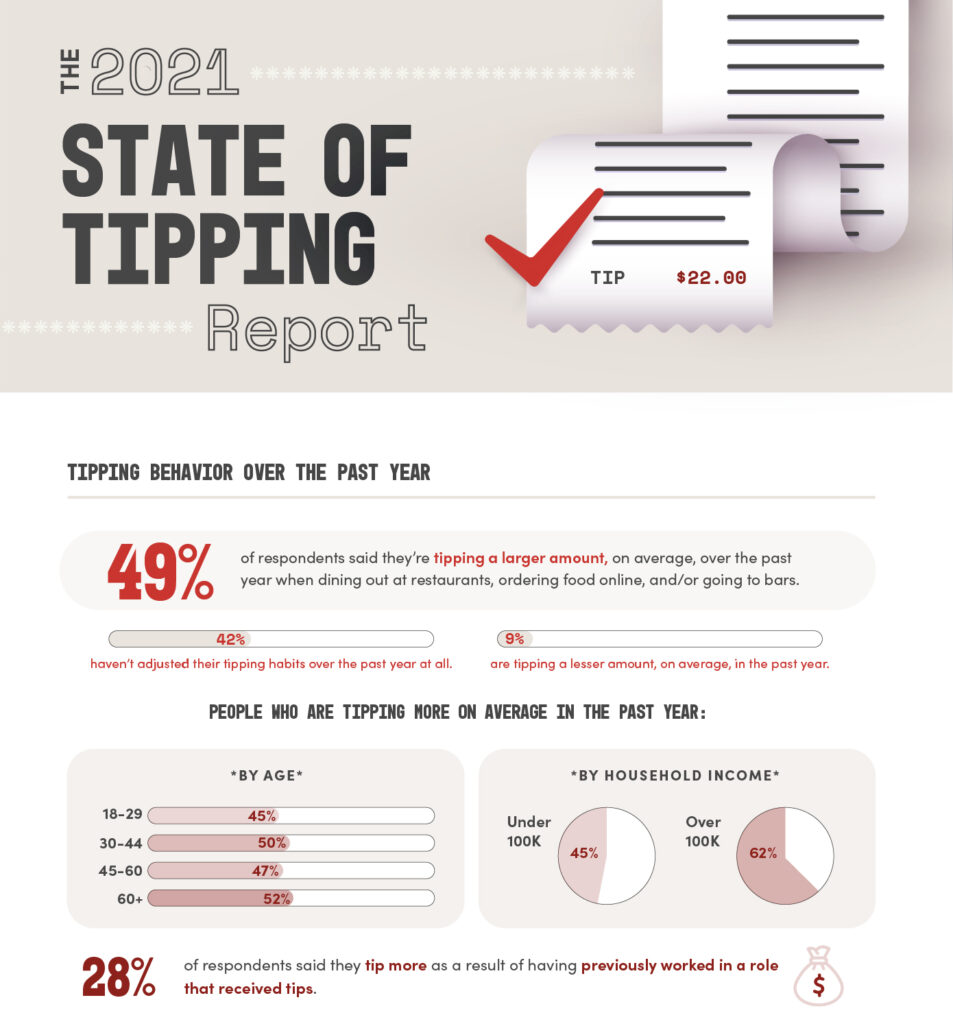
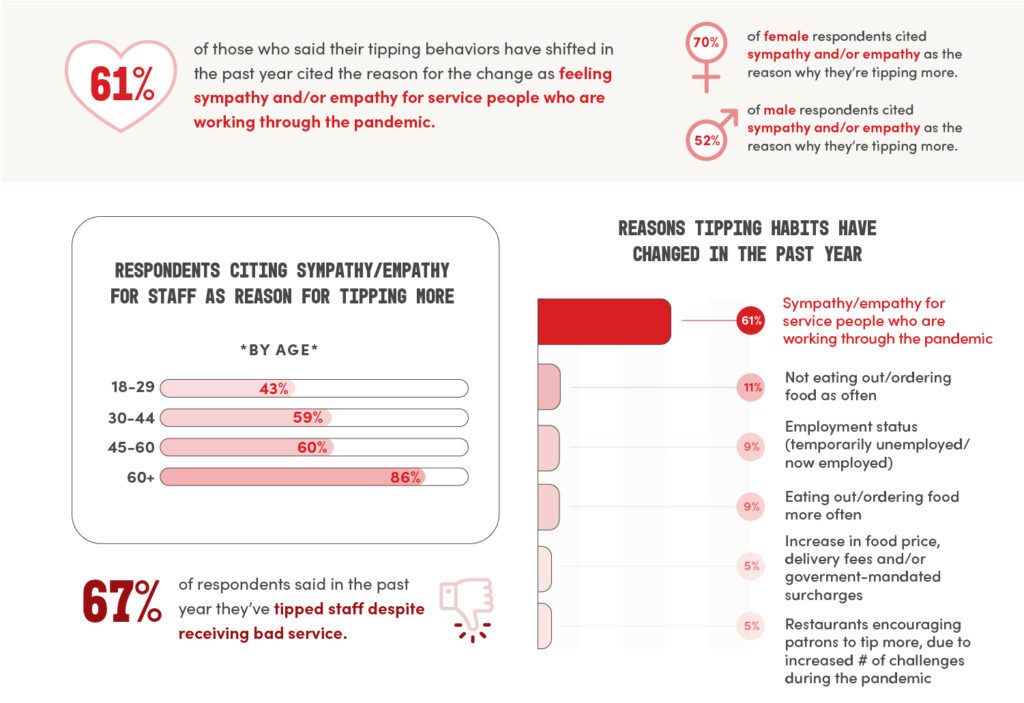
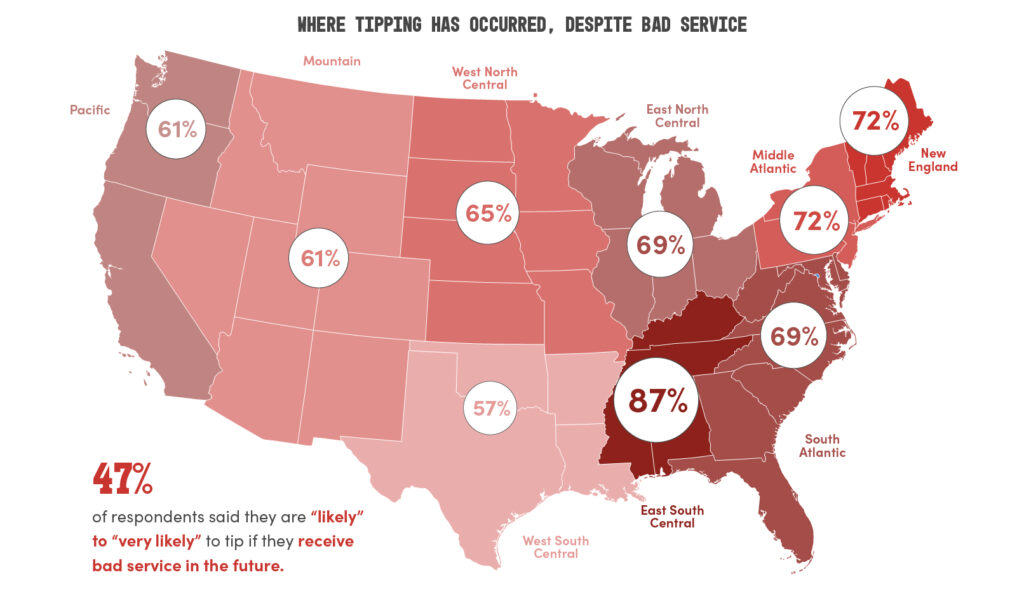
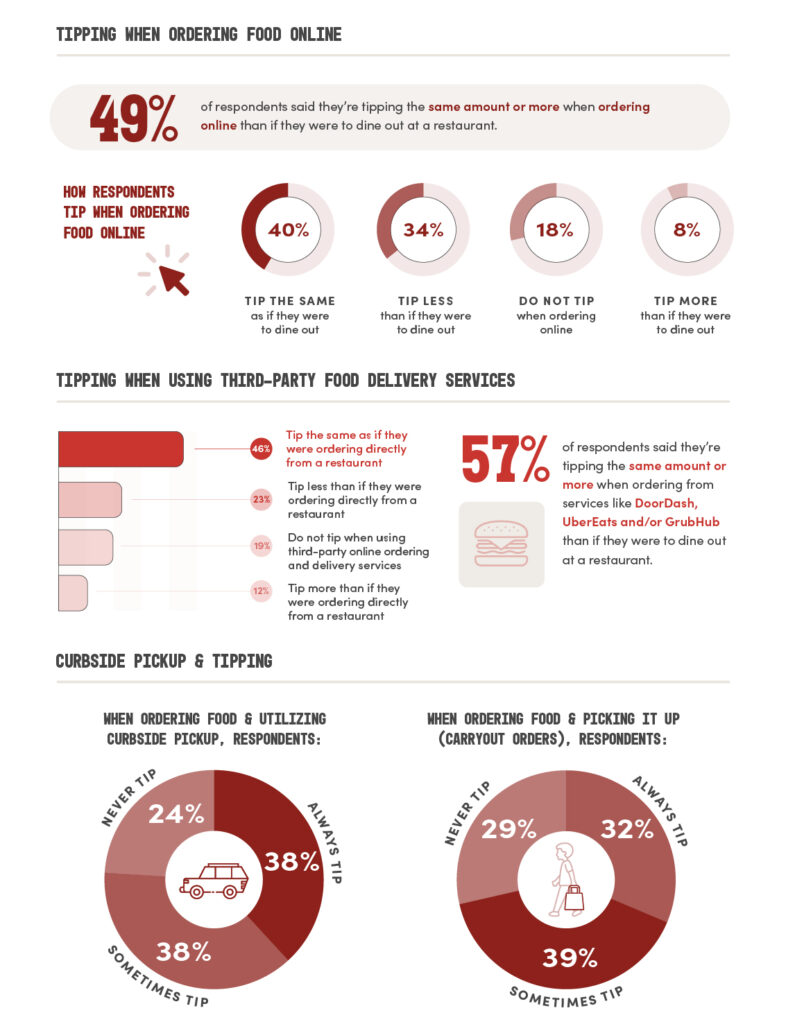
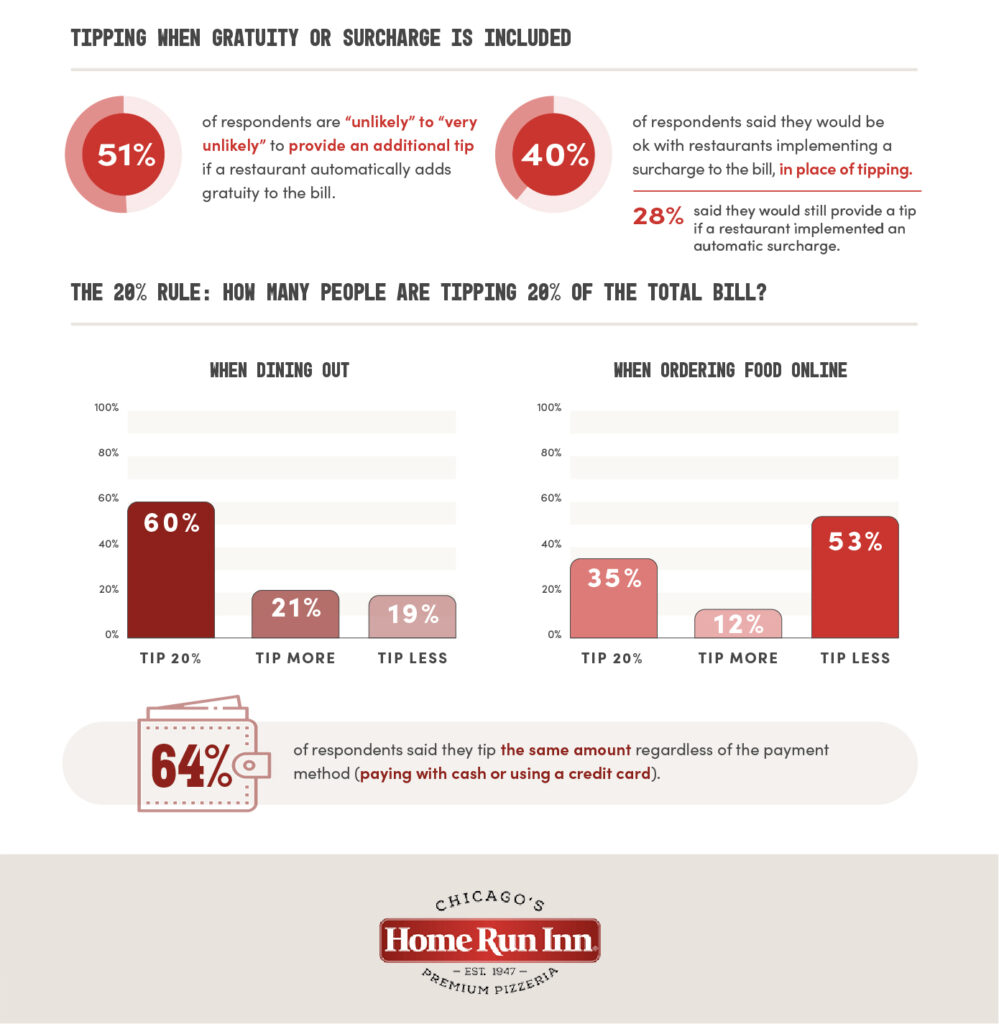
Tipping Behavior Throughout ThePast Year
While the pandemic has impacted many people’s ability to work, it appears a near-majority of Americans are still reaching into their pockets to leave generous tips. In fact, 49% of respondents stated they’re tipping a larger amount, on average, over the past year when dining out at restaurants, ordering food online, and/or going to bars.
42% of Americans surveyed said they haven’t adjusted their tipping habits at all over the past year, and 9% stated they are tipping a lesser amount.
Having worked in the service industry can also have an impact on how people tip. 28% of respondents said they tip staff more as a result of previously having a job that depended on tips.
As you might expect, household income also appears to have an impact on how Americans are tipping in 2021. In fact, 45% of households that make $100,000 or less said they’re tipping more this year than in previous years. In comparison, 62% of households that make $100,000 or more stated they’re now tipping staff more.
How Sympathy/Empathy For Essential Workers Impacts Tipping
61% of those who said their tipping behaviors have changed in the past year cited feeling sympathy and/or empathy for service people who are working through the pandemic as the reason.
Of note, female respondents were much more likely than men to cite sympathy/empathy as a reason they’re currently tipping more than the previous year (70% of females, compared with 52% of males).
While all age groups within the survey cited sympathy/empathy for the staff as the main reason they’re tipping more this year, sympathy/empathy was more of a factor for older respondents than younger respondents. Below is a breakdown of respondents who cited sympathy/empathy for the staff as a reason they’re tipping more in 2021:
- 18-29: 43%
- 30-44: 59%
- 45-60: 60%
- 60+: 86%
Tipping Despite The Perception Of Receiving Bad Service
In the past year, 67% of respondents said they’ve still tipped staff despite receiving bad service. It appears that this trend won’t reverse any time soon either — with 47% of respondents stating they are “likely” to “very likely” to tip if they receive bad service in the future.
Which states are awarded bragging rights as the “kindest” tippers in America (they tip despite believing they have received bad service)?
- East South Central (Alabama, Kentucky, Mississippi, Tennessee) – 87%
- New England Region (Connecticut, Maine, Massachusetts, New Hampshire, Rhode Island, Vermont) – 72%
- Middle Atlantic (New Jersey, New York, Pennsylvania) – 72%
- East North Central (Illinois, Indiana, Michigan, Ohio, Wisconsin) – 69%
- South Atlantic (Delaware, District of Columbia, Florida, Georgia, Maryland, North Carolina, South Carolina, Virginia, West Virginia) – 69%
- West North Central (Iowa, Kansas, Minnesota, Missouri, Nebraska, North Dakota, South Dakota) – 65%
- Mountain (Arizona, Colorado, Idaho, Montana, Nevada, New Mexico, Utah, Wyoming) – 61%
- Pacific (Alaska, California, Hawaii, Oregon, Washington) – 61%
- West South Central (Arkansas, Louisiana, Oklahoma, Texas) – 57%
Tipping When Ordering Food Online
Online ordering exploded during the pandemic — the top four companies (DoorDash, GrubHub, UberEats, and Postmates) reported nearly $5.5 billion in combined revenue from April through September 2020 alone (more than twice as much revenue the companies reported during the same period in 2019, according to a MarketWatch report). As consumer behaviors shift to online ordering, we set out to understand how this shift has impacted tipping.
58% of respondents stated they’re tipping the same amount or more when ordering from services like DoorDash, UberEats, and/or GrubHub than if they were to dine out at a restaurant.
48% of respondents stated they’re tipping the same amount or more when ordering online directly from the restaurant than if they were to dine out.
Curbside pickup is a term that was rarely used by consumers before the pandemic. It appears, however, that tipping habits have transferred to this now commonplace service as well: 38% of respondents said they “always tip” when utilizing curbside pickup for online food orders. In comparison, 32% stated they “always tip” when picking up carryout orders inside the restaurant.
Tipping When Gratuity Or A Surcharge Is Included By The Restaurant
With increased costs, plummeting patronage, and ever-increasing uncertainty during the height of the pandemic, many restaurants supported their staff by adding a mandatory surcharge and/or gratuity to customers’ bills — which likely impacted how customers tipped.
In fact, 51% of respondents stated they are “unlikely” to “very unlikely” to provide an additional tip if a restaurant automatically adds gratuity to the bill.
However, 40% of respondents stated they would be OK with restaurants adding a surcharge to the bill, in place of tipping — with 28% stating they would still provide a tip if a restaurant included an automatic surcharge.
The 20% Rule
While the 20% rule is fairly typical when it comes to tipping (adding a gratuity that is equal to 20% of the total cost of the bill), we set out to understand if the 20% rule was currently the most popular option for customers attempting to decide on how much to tip.
It seems the 20% rule still reigns supreme but only when eating at a restaurant. 60% of respondents said they use the 20% rule when dining out, compared with only 35% when ordering food online. Indeed, 21% of respondents said they are tipping in excess of 20% when dining out at a restaurant. Finally, 53% of respondents said they tip less than 20% of the total bill when ordering food online.
Survey Methodology
Total respondents: 1,072
Margin of error: +/- 3.054%
Country: United States (USA)
Region: All Regions
Gender: All Genders
Gender balancing: Census
Age of respondents: 18 – 99+
Age balancing: Basic Census
